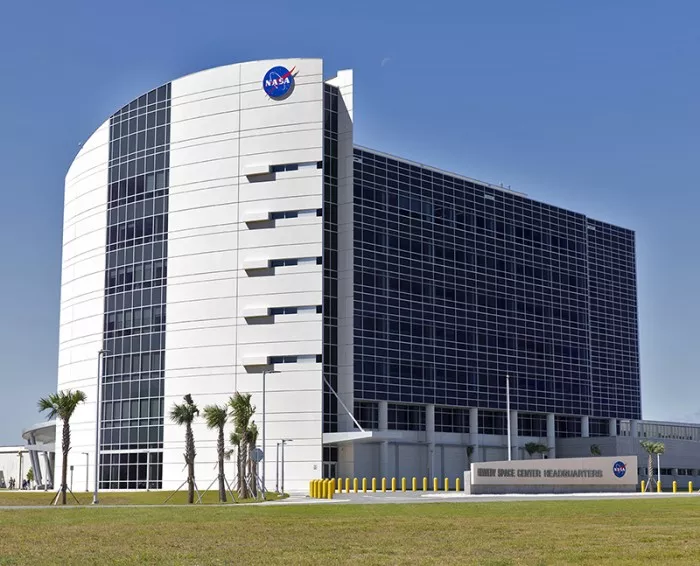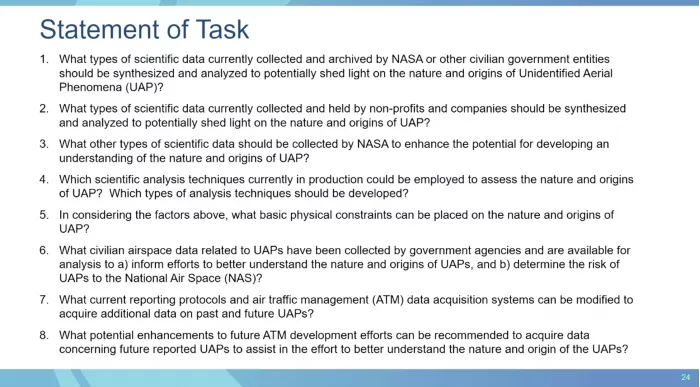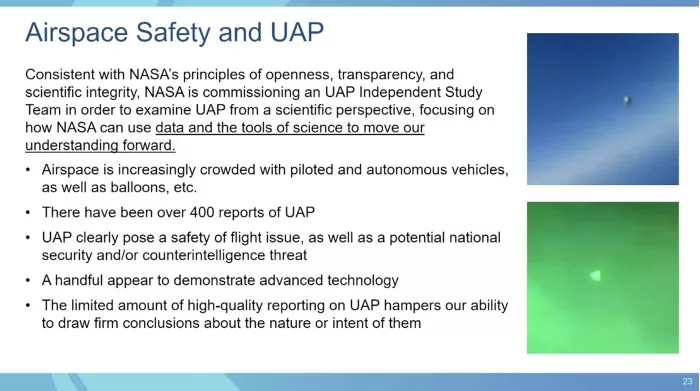According to the verge report, NASA announced on Wednesday that the agency is setting up an independent research team to study UFO sightings, or unidentified air phenomena (UAPs) , which is the latest term now used to refer to UFO. The space agency said it planned to study these sightings from a scientific perspective, but also stressed that "there is no evidence that UAPs are extraterrestrial objects".

The research team will be led by astrophysicist David Spergel under NASA's Science Mission agency. It will try to determine what data about UAPs are available at present and find out how to best obtain UAPs data in the future. NASA pointed out that due to the limitations of sightings, it is difficult to draw reasonable conclusions about the source of UAPs. According to a NASA blog post, researchers will also try to determine "how NASA uses these data to advance the scientific understanding of UAPs". According to Thomas Zurbuchen, NASA's deputy director of science, the study will be open and unclassified.
NASA said that it is indeed in the interests of the space agency to study the sightings of UAPs, although aliens are unlikely to be the source of any UAPs. Identifying UAPs caused by natural phenomena or perhaps some technology is crucial to a less well-known goal of NASA: protecting aviation safety. Although NASA is famous for its efforts in space exploration, NASA's first "a" stands for aviation after all. "The way we think about this issue at NASA is consistent with our principles of openness, transparency and scientific integrity," Zurbuchen said in a live talk at the meeting of the space research committee of the National Academy of Sciences. "We do not shy away from reputation risk."

The news of this study came out after years of hype and reporting on the UAPs sightings by the media. In 2017, a report in the New York Times disclosed that the Pentagon had a confidential project called the advanced aerospace threat identification program (aatip), which allegedly investigated UAPs often seen by military pilots. In 2020, the US Department of defense established the unidentified air phenomena task force (uaptf) within the navy to better understand the origin of UAPs.
Although NASA has not been involved in the UAPs debate in an official capacity, NASA director billnelson has made many comments on these sightings, and even hinted that there may be some other world explanations for what he saw. "I've talked to the pilots. They know what they saw and their radar has locked it," Nelson said in a live chat at the University of Virginia. "But they don't know what it is. We don't know what it is. We hope it's not an opponent of this technology on earth. But it's a thing."
Last June, the Pentagon released its own report on the potential sources of UAPs, listing five possible explanations for what pilots saw in the sky. Although many explanations are benign - such as air clutter and natural atmospheric phenomena - the Pentagon also lists a fifth category for events and sightings that it cannot explain, namely "other".

On May 17, a subcommittee of the House Intelligence Committee held a hearing to examine the situation of the UAPs working group. This was the first public hearing on UFO held by the US Congress in more than 50 years. At the hearing, Scott Bray, deputy director of the US Naval Intelligence Agency, claimed that the UAPs working group had collected 400 UAPs eyewitness reports. He also showed two videos about UAPs, one of which was only a few seconds, showing a small spherical object moving rapidly in front of the camera. Bray used it as an example to illustrate how little detail pilots sometimes get when witnessing UAP.
However, Bray also believes that aliens are not the answer. "When it comes to the materials we have, we don't have any materials -- we haven't detected any missiles in the UAPs task force that can indicate that it is of non earth origin," Bray said
At a press conference last year, Nelson mentioned that he had talked with Zurbuchen about NASA's possible scientific research on UAPs. On Wednesday, Zurbuchen confirmed at a press conference that the impetus for this study came from all the attention paid to the work of UAPs in the Pentagon in the past few years. NASA estimates that the research budget will be between tens of thousands of dollars and 100000 dollars.
NASA said that its research had nothing to do with the UAPs working group or its successor, the airborne object recognition and management synchronization group (aoimsg). However, when announcing the study on Wednesday, Zurbuchen also pointed out that UAPs pose a threat to national security and anti espionage, which are not entirely within NASA's purview. "That's not our job," Zurbuchen said. "We are not going to study this at NASA. It is the responsibility of others. However, as a country and a government, it is obvious that there are many important things here, and a few of them seem to show advanced technology."
The research team may obtain confidential information at some time, although the focus will be on public data. "I don't have a classification license, and we hope this is an open study," Spergel said at a news conference. "So what we will rely on is that some members of the committee will have permission and insights that we can get, which may help, but mainly I think we will really try to see what we can learn from the public data."
NASA said the study would take about nine months to complete. Finally, Zurbuchen believes that NASA can help better understand UAPs by observing potentially dangerous asteroids in the night sky or observing the earth from space. He said: "can we use the existing data sets and use methods to find those short-lived events - consistent and sometimes overlapping with other witnessed events?"
Although NASA stressed that there was no evidence that UAPs were extraterrestrial, Zurbuchen did not close the door to this possibility. "If someone asks me if I really think there is irrefutable evidence of intelligent life in these phenomena, I will give an absolutely acceptable answer as a scientist," Zurbuchen said. "That is, 'I don't know'."